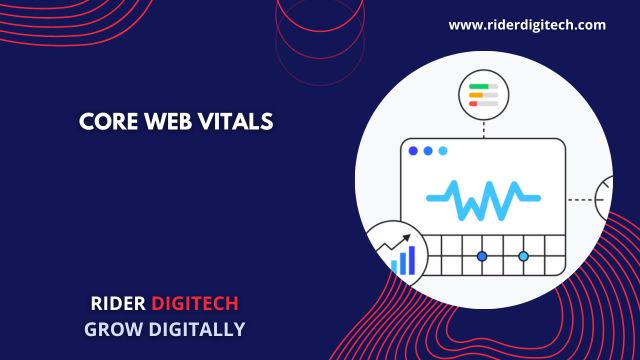
Core Web Vitals: Enhance User Experience and SEO Performance
What is Core Web Vitals?
Core Web Vitals are a set of performance metrics introduced by Google to evaluate the overall user experience provided by a website. They focus on critical aspects of web interaction, aiming to ensure that web pages are not only fast to load but also offer a smooth, engaging, and user-friendly experience.
2. Understanding the Three Core Metrics
2.1 Largest Contentful Paint (LCP)
LCP measures the loading performance of a page by analyzing the time it takes for the largest content element to become visible within the user’s viewport. This metric directly relates to the perceived loading speed of a page and aims to ensure that users are presented with meaningful content promptly.
2.2 First Input Delay (FID)
FID gauges interactivity by measuring the time between a user’s first interaction (such as clicking a link) and the browser’s response to that interaction. A shorter delay indicates a more responsive page, enhancing the user experience, especially on interactive websites and applications.
2.3 Cumulative Layout Shift (CLS)
CLS quantifies visual stability by measuring the unexpected layout shifts that occur during the page’s loading process. It considers the elements that might shift or move, causing confusion for users trying to interact with the page. A lower CLS score reflects a more stable and user-friendly design.
3. Why Core Web Vitals Matter
Core Web Vitals are not just another set of technical metrics; they directly impact user engagement, retention, and conversion rates. Websites that prioritize a seamless user experience through optimal Core Web Vitals tend to have lower bounce rates, longer session durations, and improved user satisfaction.
4. Measuring Core Web Vitals
4.1 Using Google PageSpeed Insights
Google PageSpeed Insights is a widely used tool to assess a website’s Core Web Vitals performance. It provides scores for each metric, along with detailed suggestions for improvement.
4.2 Google Search Console’s Core Web Vitals Report
Google Search Console offers a Core Web Vitals report that outlines how well a website’s pages perform in real-world usage. This report gives valuable insights into which pages need attention and optimization.
4.3 Other Reliable Tools for Measurement
Apart from Google’s tools, there are several third-party tools available that can help you assess your website’s Core Web Vitals, giving you a holistic view of its performance across different platforms and devices.
5. Optimizing for Core Web Vitals
5.1 Optimizing Website Speed
To improve LCP, optimize your website’s assets such as images and videos, use a content delivery network (CDN), and consider lazy loading to defer non-essential content.
5.2 Enhancing Interactivity
Reducing FID involves minimizing JavaScript execution time. Break tasks into smaller chunks, remove unnecessary third-party scripts, and prioritize critical tasks for quicker user interaction.
5.3 Improving Visual Stability
To tackle CLS, specify dimensions for media elements, use CSS animations instead of abrupt changes, and reserve space for ads or dynamic content to prevent unexpected shifts.
6. Impact on SEO Ranking
Google has officially announced that Core Web Vitals will become a ranking factor in its search algorithm. Websites that offer superior user experiences by meeting these vitals are more likely to rank higher in search results, making optimization crucial for maintaining or improving SEO performance.
7. User-Centric Approach to Web Design
Core Web Vitals encourage a user-centric approach to web design and development. By prioritizing the user experience, web designers and developers create websites that not only meet technical standards but also resonate with the target audience.
8. Mobile Considerations and Core Web Vitals
Given the rise of mobile browsing, Core Web Vitals are particularly relevant for mobile users. Optimizing for mobile devices ensures that users across various platforms have a consistently positive experience.
9. Future-Proofing Your Website
As the digital landscape evolves, Core Web Vitals may change to adapt to new technologies and user preferences. By staying informed and consistently optimizing your website, you ensure that your web presence remains effective and user-friendly.
10. Conclusion
In the age of user-centric design and SEO, Core Web Vitals play a pivotal role in shaping a website’s success. By focusing on loading speed, interactivity, and visual stability, website owners can provide a superior user experience, improve SEO performance, and ultimately achieve their online goals.
FAQs
Q1: Are Core Web Vitals the only factors affecting SEO?
No, Core Web Vitals are important, but other factors like content quality, backlinks, and mobile-friendliness also impact SEO.
Q2: Do Core Web Vitals affect mobile search rankings more than desktop?
While Core Web Vitals are important for both, they have a more significant impact on mobile search rankings due to the prevalence of mobile browsing.
Q3: How often should I measure my website’s Core Web Vitals?
Regular monitoring is advisable, especially after making significant changes to your website. Quarterly assessments are a good starting point.
Q4: Can third-party plugins influence Core Web Vitals?
Yes, some third-party plugins can impact vitals. It’s essential to evaluate their effects and choose wisely.
Q5: Where can I learn more about optimizing Core Web Vitals?
You can find detailed resources on Google’s official documentation and various reputable SEO blogs and websites.
For More information related to SEO World Keep Visiting Our Website www.riderdigitech.com.


